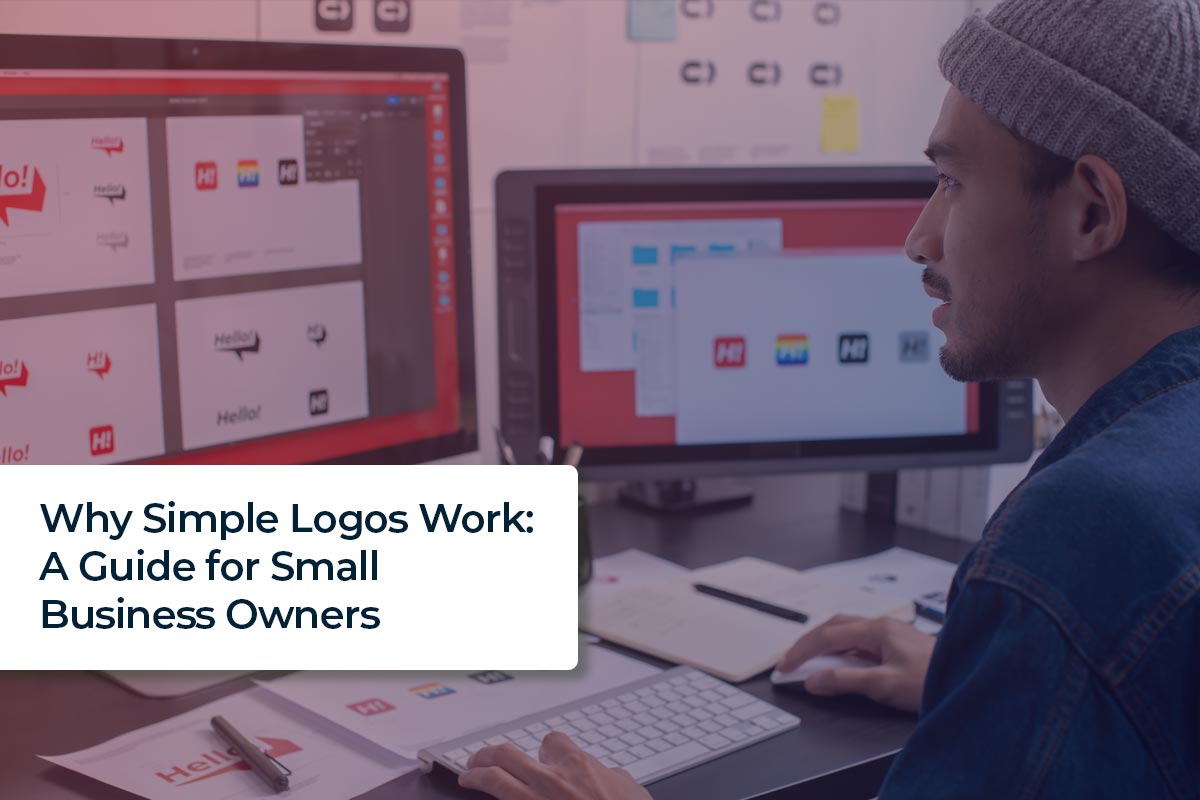Why Simple Logos Work: A Guide for Small Business Owners
I recently spoke with a business owner who was trying to decide between two concept designs for their logo. The two logos were similar, but one had an additional graphic element that was purely a decorative element. This particular decorative element was large and overpowering and it did not add any real value to the design.
Predictably, many of the people asked expressed their enthusiasm for the design that was more elaborate, but also less effective and practical. Many people don’t know the things that should be prioritized when it comes to logo design.
I understand that crowdsourcing is often a go-to method for small business owners looking for the confidence of groupthink, and I do think there is limited value in asking people around you. Most people emphasize form over function and are going to give you their biased opinion of what they like best without really thinking about how the branding will function.
I advised her that the simpler, cleaner logo was better for a number of reasons. I broke it down this way: The simpler logo was better because it passed the three R’s rule: 1. Readable 2. Resizable 3. Reproducible
Many people, designers like myself included, have bemoaned the move toward ultra-minimalism that has appeared over the past few years. In modern design, there can definitely be an extreme bend toward minimalism, which often serves to strip away the history or distinctive flair of older design.
Despite this trend, there is a way to artfully and skillfully simplify and modernize a logo, while retaining its classic essence, a nod to its history, and the design elements that make a mark unique and memorable. I like the three R’s approach because it is a simple way to provide small business owners with a strong foundation for making informed decisions about their brand identity.
There are many things small business owners should consider when rebranding or refreshing their brands. Whether you are trying to DIY or working with a professional designer (strongly recommended) this framework can be helpful when considering what works and what doesn’t when developing your brand identity.

Enthuse Creative recently rebranded the National Waterways Conference logo to make it simpler, more easy to reproduce and implement in digital settings.
Your Logo Needs to be Readable:
The design elements should work together to enhance the ability of the reader to understand the name of your business and be able to contextualize your brand identity. In this day and age, the logo or name does not have to directly tie into what product is being sold or service that is being provided, however, it must be clear and legible.
Your logo is often the first point of contact for a potential customer, so it must communicate the brand’s essence quickly and effectively. You have milliseconds to catch the eye. A cluttered or overly ornate logo can create confusion or be overlooked entirely. It needs to be able to be scanned quickly with the eye in different settings. Design elements and ornate fonts can also obscure readability. Prioritize elements that communicate your business identity instantly, even at a glance.
Your Logo Needs to be Resizable
Your logo will exist in many different settings in the printed and digital world. You should consider all the ways that your brand identity must show up before you design something. Your logo should look as good on a large banner as it does on a business card or mobile app icon. Highly detailed designs tend to get lost or distorted when scaled down, and small elements might blur together.
Your logo should be created initially in a vector-based program like Adobe Illustrator, and you should have a version that is vector-based (such as a .eps file) so that it can be resized infinitely without losing quality. This is crucial for maintaining crispness and clarity across different uses. If you have a logo that is a raster-based version only, at a certain size, the pixels within the image may become distorted and the resolution of your logo will be destroyed. A simple design will scale far better than one loaded with decorative elements. A simple approach to logo design ensures that the logo is identifiable in any context, from tiny social media thumbnails to large outdoor signage. You should have different files of your logo, in different resolutions and different formats for different settings. Here is a good resource for the different types of logo files you should request from your designer.
Your logo needs to be Reproducible
This point is similar to the previous points. It should be able to be easily reproduced in a one-color or black-and-white format. You have to consider all the different mediums where your brand might show up, such as digital, print, or even apparel or physical products. There will be times when access to a full-color palette is not available. Things like complex gradients, shadows, and other intricate details can be difficult or impossible to reproduce. This needs to be accounted for in your design process. Keep in mind that simpler is likely to cost less because special production techniques will not be required.
The need to create a brand identity that stands out– that is dynamic and memorable, must be balanced against these very practical concerns. There is a way to do both, but you need to get input from professionals who create these solutions for people all the time to ensure you’ve got your bases adequately covered. By focusing on readability, scalability, and reproducibility small business owners can create a logo that serves as a strong, long-lasting representation of their brand.
Enthuse Creative Can Help
Enthuse Creative can help your business design and develop an amazing, versatile brand identity. Please reach out to us today for a free consultation.







